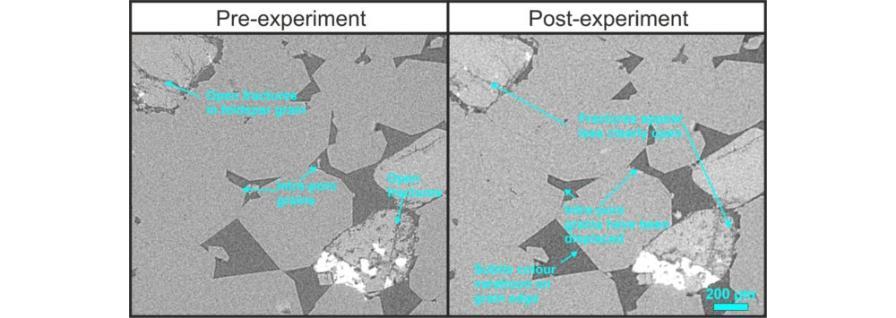X-ray CT Research Example: Porosity analysis pre- and post ignition
Viewing of the same sample before and after experimental ignition to observe microscale changes in structure
The need to find clean energy sources has never been more important than it is today. There are tens of thousands of abandoned oil fields globally that may be adapted to produce green energy with the help of air injection and subsequent subsurface (in situ) exothermic oxidation. Energy can be generated either via the production of hydrogen, as a direct result of oxidation of residual oil, or via the exploitation of the inherent increase in heat flow and pressure via enhanced geothermal systems. This increase in temperature in subsurface depleted oil reservoirs during exothermic oxidation can be in excess of 600 °C. Such temperatures may cause mineralogical changes and even geomechanical damage in the host reservoir rocks.
These changes must be thoroughly understood prior to field trials of in situ oxidation of residual oil in the subsurface. To achieve this, reservoir analogue rocks were exposed to these temperatures in a series of rock firing experiments undertaken in the Department of Earth Ocean and Ecological Sciences at the University of Liverpool. To fully understand the effects on a rock it is vital to observe it before and after in situ oil oxidation.
MicroCT was chosen as it allows unparalleled, non-destructive visualisation of the microstructure of rock samples. The same rock samples have been scanned before and after experimental ignition to study the micro-scale changes in the pore network and to grains caused by the increase in temperature and the oil oxidation process.

Analysis of the 3D image stacks before and after ignition detected a decrease in porosity in the rock due to ignition, matching closely with lab derived pyncometry measurements. In these experiments, subtle mineralogical changes, due to in situ oxidation and heating, were observed within the samples. Future work on this project will look to recreate the expected mineralogical changes and the continued use of MicroCT will allow us to observe the specific mineral and pore space alteration processes and how these changes affect the rock’s properties.